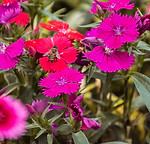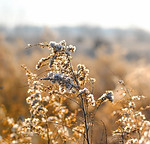
Making Space for Nature
Our aim is to work with nature, in order to increase biodiversity within the unique flora and fauna in both the public and private spaces within our village. We hope to provide the maximum range of appropriate food plants important for declining pollinators. Even small increases in the numbers of flowering plants can hugely benefit insects, and therefore the whole food chain.
To understand and boost this particular delicate ecosystem, we will be working with experts and appropriate authorities (especially in public spaces such as verges, etc.) Through our website, at fairs and courses, we will encourage interested residents to create areas within their gardens, to boost wildlife. Increasing biodiversity in our local environment will greatly benefit not only nature, but ourselves, and most importantly our planet. Carbon emissions can be mitigated by enhancing wildlife.




















MINI MEADOWS:
No matter how small your garden is, some grassy patches left unmown in your lawn can soon provide habitats for wildlife. Pollinators will visit the new flowers , bees love clover, seeding grasses and dandelion provide food for sparrows and goldfinches. Butterflies and moths may breed in the long grass and hedgehogs, frogs, toads and newts may use it to find food and shelter from predators. You may only have room for one patch, but you can make a lovely feature of these varying shapes or strips, contrasting against the short grass. Check that the patch will be quite quiet and enjoy observing these patches, take note of new species, and do send photos via our website or Facebook.
If you don’t have a lawn, why not plant pots with lovely pollinating flowers, such as Cosmos, Salvia and Geranium or herbs. Marjoram, thyme, chives and lavender are all great plants for pollinators. And if you are growing vegetables in pots, grow french marigolds and nasturtiums as companion plants. They will attract bees and other pollinators plus predators like ladybirds, hoverflies and lacewings that eat the pests that would otherwise eat your crops. Finally they are good at attracting predators like slugs and blackfly away from your vegetables.
You can also take part in Every Flower Counts, an exciting survey to monitor our lawns here in the UK. They aim to assess trends over time, and see whether we can manage our lawns differently to increase the National Nectar Score. Will climate change have an impact on flowering and nectar production? What are the most abundant flowers and what can we do to encourage them.
If you are interested in taking part in this exciting and simple survey go to: plantlife.org.uk/everyflowercounts
We also offer free garden consultations for your nature friendly garden.

